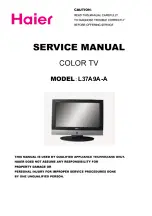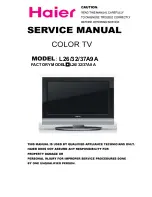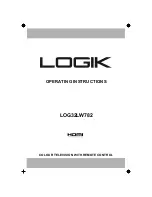
234
235
●
Dynamic versus Static IP Addresses
If the network requires a dynamic IP address, use an ADSL modem or router that supports
the Dynamic Host Configuration Protocol (DHCP). Modems and routers that support DHCP
automatically provide the IP address, subnet mask, gateway and DNS values the TV needs to
access the Internet, so they do not have to be entered manually. Most home networks use a
dynamic IP address.
If the network requires a static IP address, enter the IP address, subnet mask, gateway, and DNS
values manually when setting up the network connection. To get the IP address, subnet mask,
gateway and DNS values, contact your Internet Service Provider (ISP).
If the network requires a static IP address, use an ADSL modem that supports DHCP. ADSL
modems that support DHCP also allow static IP addresses.
●
Bluetooth
Bluetooth Technology is a short-distance wireless communication protocol allowing information
exchange between connected mobile phones, laptops, earphones and headphones with
Bluetooth-compatible devices. Bluetooth technology is a short-distance wireless communication
protocol connecting mobile phones, laptops, earphones and headphones with Bluetooth-
compatible devices. This is useful when a Low-electricity wireless connection is necessary within
a 10m distance.
●
Ethernet
Ethernet is a LAN (Local Area Network) that uses coaxial cables standardised by the IEEE.
●
Component Connection
Component connections are mostly used for game consoles and transmit the video signal by
splitting it into a luminance signal (Y) and two colour signals (Pb and Pr). The connector is
marked as [Component IN]_(Pr, Pb, Y) on the back of the TV. On some devices, it is sometimes
marked as Cr, Cb, Y. Cb and Cr are the digital conversions of the Pb and Pr signals.
The connectors are normally colour-coded red (R), blue (B), and green (G) and offer the best
picture quality possible for an analogue connection.

































